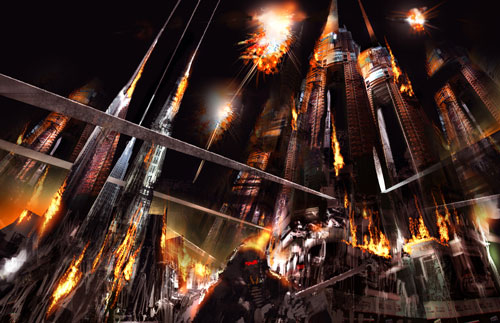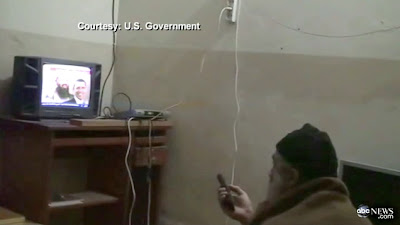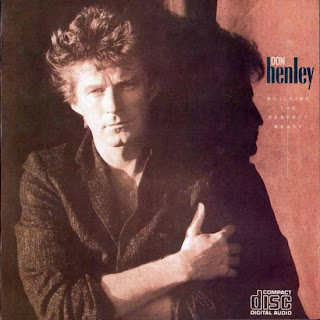And my old friends, we were so different then
Before your war against the suburbs began
Before it began
And now the music divides
Us into tribes
You grew your hair so I grew mine
They said the past won't rest
Until we jump the fence and leave it behind.
-- Arcade Fire, “Suburban War”
Springsteen-like "indie rock" ingenues the Arcade Fire released The Suburbs last year to great fanfare. Win Butler and crew looked past easy generalizations, suggesting that the suburban experience is more complicated than it has been given credit. As Pitchfork noted approvingly The Suburbs proved "a generously paced collection of meditations on familial responsibility, private disappointments, and fleeting youth, much of which takes place in moving vehicles." The struggles of suburbia provided the group with material rich enough for a Grammy award winning album (followed by confusion - and anger sometimes - over who the band is), but far more importantly a powerful distillation of Arcade Fire's considerable skills. People make place, not the other way around. However, as critics like J. Eric Oliver have pointed out, suburbanization has shifted populations into mono racial/economic communities in which citizens remain unengaged (J. Eric Oliver, Democracy in Suburbia). Importantly, Oliver notes, "most of us are unclear about what exactly a 'suburb' is." Most are located within metropolitan regions but outside the central city, but what if your metropolis lacks a true "central city"? How does urban suburbanization, so common in western and Sunbelt cities, shape human geographies?
Few American cities embraced suburbanized urbanization to the extent that San Diego, California has. The city’s growth remains an encapsulation of sunbelt surburbanization as five lane highways, free market ideologies, New Right conservatism and automobile dependency came to define the city. Municipal policies favoring private market housing have resulted in highly segregated city where much of the city’s white population resides in suburban townships while its lower income residents reside in an ill defined part of the city known as Southeast San Diego. In 1980, nearly 76% of the city’s residents were white, and thirty years later this trend has only intensified, increasing to nearly 80% by 2010. As a 1981 San Diego Union Tribune article noted, despite a battery of state, federal, and local housing programs, the metropolitan area’s pattern of segregation only deepened.
Boosters like Joel Kotkin hail San Diego’s neoliberal approach for its effectiveness in limiting the public sector (“Today San Diego has one of the lowest ratios of public employees per capita in the nation”) and unions (“In the early decades of the century, the city was famed for its hostility to the labor movement, a sentiment that sometimes spilled over into ugly anti-union vigilantism.”), while pursuing what some refer to as the “San Diego Way”: privileging the private sector and personal initiative. For Kotkin, even minorities, which his article seems to suggest are to blame for urban political gridlock in other cities, (“The city lacks the politics of ethnic grievance that has entrenched a costly and divisive ethnic spoils system in so many older big cities”) have “committed to bourgeois respectability”. Kotkin admits San Diego has its “ghettos”, but the struggles of Southeastern San Diego Communities and the historic Logan Heights, home to Barrio Logan (a largely Mexican/Mexican American community home to famed Chicano Park), exist as an anomaly.
How was Kotkin to know that nearly all of San Diego’s net growth in the 1990s was going to be due to black, Latino, and Asian minorities? As Nancy McArdle points out, suburban growth has also been impacted by minority homeownership. However, despite this increase, McArdle notes segregation levels for Latinos, suburban and urban have increased. “It is especially disturbing, therefore, that the largest increases in overall segregation are for suburban Latinos,” she writes. “Indeed, while whites comprise 60 percent of the total suburban population, the average Latino suburbanite lives in a census tract that is just 45 percent white, down from 58 percent white in 1990. Latino/white segregation has also increased in the City, and is now on par with black/white levels.”
Writing in 1996, Kotkin either ignored these developments or was simply unaware. Instead, Kotkin focused on San Diego’s burgeoning urbanity resulting in a city with a “dash of urban excitement.” The popular demographer even suggests that newly constructed Gaslamp Quarter an area “once populated by drunks, homeless people, and sailors who couldn’t make it to the more extensive fleshpots of nearby Tijuana,” represented a West Coast “sun lit version” of New York’s Tribeca neighborhood.
Of course, anyone who heads downtown today will find the snazzy nightclubs, “authentic” pubs, and fancy hotel restaurants/bars Kotkin praises. Yet, they will also find a palpable homeless population, boutique hotels next to neon lit check cashing stores, and grubbiness that in spots rivals the very New York he disparages. Finally, though some of the Gaslamp Quarter shines, it does so in a very unrealistic way: a disneyfied version of the Lower East Side, one might argue, with homeless people. Moreover, this all ignores the fact that in terms of providing housing for its low income populations, the city’s hostility toward public housing resulted in less than 2000 public housing units total. When new pro market private-public schemes developed under the low income tax credit , the city had no infrastructure to take advantage of its vaunted “private sector.” Its resistance to public housing meant it never developed the institutions, connections, and housing knowledge to build even affordable housing. As a result the city relies heavily on section 8 vouchers providing over 14,000 families each month with subsidized housing. Still, there remains 5 -7 year wait for the thousands of families in line to qualify for the voucher. In 2002, the city council declared affordable housing in the area to be in a state of crisis. Kotkin’s 1996 article failed to note this development despite the fact city planning reports dating back to the 1970s pointed out that the metropolitan area lacked the adequate stock of low and middle income housing.
Still, Kotkin does get some things right. For example, he notes the explosion of college diplomas and advanced degrees. Between 1970 and 1990, San Diego absorbed over 300,000 people with college degrees rising from 96,000 in 1970 to nearly 400,000 in 1990. By 1996, over 25% of the city’s population held a BA, which at that time was about 5% over the national average. Additionally, San Diego exceeded all other cities in PhD per capita. Undoubtedly, the establishment of the University of California San Diego (1960) with its elder sibling San Diego State University (established in 1897 as the San Diego Normal School) have contributed to these developments (nor should the private University of San Diego be ignored).
This creation of what Richard Florida would call a “creative class” drove neighborhood change in the Gaslamp Quarter and other areas. Formerly hardscrabble neighborhoods like Golden Hill, North Park, Hillcrest, University Heights, and to a far lesser extent Normal Heights were gentrified in part by these new educated classes but also by Southern California hipsters (sleeve tattoos are the new black and yes, lots of bicycles, no comment on fixies). Hillcrest came to be the dominant gay community (though all of these neighborhoods are very gay friendly). As Josh Sides has recently documented in Erotic City: Sexual Revolutions and the Making of Modern San Francisco, SF’s famed Castro district underwent a transformation in the 1970s as gay residents renovated the neighborhood’s run down “Victorians” and reshaped the city’s cultural geography. However, this process also drove gentrification such that at the end of the 1970s “the median value of a Castro home was 37% higher than city wide average.” (111) In San Diego’s Hillcrest, night life centers around the University Avenue strip where one can find everything from dive bars (The Alibi – punky, highly recommended) to live venues (The Ruby Room- really cheap happy hour) to 1970s era lounges like Nunus (red lights and old fashioneds) to the more stylistic grace of the Tractor Room (fancy mixed drinks and a farming motif refracted through 21st century hipsterdom).
With that said, clearly, Hillcrest is not the Castro but a similar process has unfolded, even pushing less prosperous gay residents to adjacent North Park. Today Golden Hill, renamed South Park due to the previous association with the area’s former drug trade, has some of San Diego’s best bars and restaurants including Hamilton’s (Beer - but lots of it- only, shuffleboard, and .. dogs, always dogs), Vagabond (European food and morals, quality), and the Whistle Stop (mixed drinks, theme night, and movie Sundays featuring "classics" like Harold and Maude. Watch out for Fridays, local elementary and secondary pedagogues are known to get their collective drink on.). The aforementioned North Park, whose edges still sometimes harken back to its rougher days, has numerous trendy spots as well including Bluefoot (meat market? Maybe), the Linkery (supra local organic food and sports a handsome bar made by San Francisco furniture maker Forest Dickey – SDSU MFA alum), Toronado (SF based Beer Bar – West Coast IPA - "Danger Will Robinson!") and El Cajon Ave’s goofily cool the Fox Room (you don’t often get serenaded by middle aged lounge lizards these days). Normal and University Heights, though less well off than those already mentioned, have vibrant bar and restaurant scenes from the Blind Lady Ale House (People have been known to crash their bikes after one too many at this pizza/craft beer bar - plus a beautiful Hamm’s mural – Keep it Classy San Diego!),Live Wire(Punk hook ups like nobody's business) and the Triple Crown (Darts, Pool, Ping Pong TVs)to Small Bar (sister bar to Hamiltons but with booze and yes, it's fucking small) and the notoriously weird Lancers (bottled beer, wood paneling, and low low lighting).
It is also in these five communities that one finds the liberal heart of San Diego’s culture. [Editor's Note: Ocean Beach doesn't count here its more about hippies than liberalism, besides its more of a beach town than a urban suburban neighborhood] Kotkin argued that civic culture in San Diego remains very conservative such that even the liberals could be described as more centrist than leftist. Even SDUT journalist, Richard Louv, who Kotkin describes as “the closest thing to a liberal gadfly” San Diego had commented that because of its lack of a Left, the city “really had an opportunity to innovate.” These neighborhoods would strongly disagree. As Stevo proclaims in SLC Punk, “In a country of lost souls, rebellion comes hard, but in a [politically oppressive] city … it comes like fire.” Granted describing San Diego as politically oppressive is undoubtedly overstatement, but as numerous observers have pointed out, it’s certainly not Portland (“Where all the hot girls wear glasses../where young people go to retire...”) or San Francisco.
Likewise, for all Kotkin’s fawning over technocratic advance due to its universities, UCSD has also fostered its share of radicalism. As Jeremi Suri argues in Power and Protest, from his perch at UCSD, Herbert Marcuse helped craft structures of dissent for global leftists that resulted in wide ranging consequences. In the 1970s, a UCSD coalition of Chicano and African American students demanded a new Lumumba Zapata college (UCSD is today divided between six colleges each with a specific focus). Protesters, among them then philosophy graduate student Angela Davis, wanted the college to equip Black and Brown students with the knowledge and skill to more effectively wage liberation struggles. This promotion of transnational identities reflected wider visions of the Black Power and Chicano movements that up to recently have been ignored. Though the coalition collapsed by 1973, it illustrated the countervailing political forces in a region dominated by conservatism (or La Jolla in this example, which is technically part of the San Diego, but possibly even more Republican).
Of course, one would be remiss if one discussed San Diego without mentioning its military presence. In August of 2010, the Navy announced that the San Diego regional military payroll amounted to 11.1 billion annually for active duty personnel. This is not new. As Roger Lotchin has argued, San Diego pursued military dollars better than any other municipality in California and perhaps the nation. Though WWI helped its initial build up, WWII brought and explosion of population and infrastructure. During Vietnam, the military accounted for 30% of all jobs in San Diego County. Today, it represents closer to 7.4% percent as biotech and telecommunication firms have stepped into the local economy. With numerous Marine and Naval installations and 16000 units of military housing throughout the county, the built environment reflects this martial presence. Granted one might suggest that the military also contributes to the conservative hue of the county, but, one should remember the military takes all political persuasions. Also, without a doubt the increased racial and ethnic diversity of the military has helped bring greater variety to San Diego County’s boundaries. With that said, as former UCSD Professor Abe Shragge discovered, when the city pursued the Navy it did so for less then pure reasons. For Shragge, San Diego elites believed the pre-WWII navy lacked radicals, minorities, or “crooks” (Shragee, Abe, "Boosters and Bluejackets: The Civic Culture of Militarism in San Diego, CA, 1900- 1945," dissertation). Dreaming of an upstanding radical free white middle class, San Diego elites would have never countenanced the military’s magnetic pull for native born minorities (both through military service and defense industry jobs) and overseas immigration spurred by American military conflicts in Asia (Vietnam/Korea which resulted in a transnational flow of migrants to US shores through refugee acts and marriage to service personnel).
Still, there are other ramifications from this presence that many find less than attractive. First, disability in San Diego remains a relatively common experience. In addition to veterans from previous wars ranging from Vietnam to the first Gulf excursion, numerous soldiers return from combat in Afghanistan and Iraq with injuries that leave them physically challenged on some level. Second, the burgeoning “Asian massage” industry, one that may or may not hinge on human rights violations, has proliferated. While one may find terrific Vietnamese food on El Cajon Avenue, residents may also indulge their more prurient desires either through the numerous massage parlors or the burgeoning prostitution scene in the same area. Certainly, the military is not wholly to blame, but segments of its large numbers of unattached male service personnel probably dabble now and then in the darker side of the city’s nightlife.
So if San Diego’s human geography illustrates a prospering but divided populace, what does its built environment look like? The metropolitan area’s man-made geography does suffer from interstate gashes across its numerous canyons, but it also provides a multiplicity of landscapes to explore from the cliffs of La Jolla state park to trails of Poway’s Blue Sky Ecological Reserve (watch out for mountain lions) to the kitschy brilliance of Lego Land to the dimly lit bar scene full of neon signage. For those who want to tap into their inner Johnny Utah, San Diego offers quality surf spots as well. If one wants Asian food, you go to Convoy Street, where numerous Korean (Dae Jang Keum), Japanese (Okan and Sushi Ota)and Chinese restaurants abound (The Dumpling Inn is another recommend and numerous people hype Ba Ren ) or El Cajon Boulevard in the “Little Vietnam” neighborhood (Saigon is recommended here). While this diversity is certainly welcomed, much like its human geography, it appears disjointed. The Adams Avenue thoroughfare that runs through University Heights, Normal Heights, and the upscale Kensington seems as much like an agglomeration of random businesses than any coherent plan or development. Body shops sit next to Reggae clothing stores next to transcendental bookstores and yoga centers. El Cajon Boulevard can best be described as a fascinating "hot mess". In letting development take its “natural course” (meaning its hands off pro-market approach) the city has created a compelling but sometimes confusing built environment.
As in the lyrics of Arcade Fire’s “Suburban War,” one of the great regrets regarding San Diego is its divided “tribes.” For all its progressivism, the cluster of neighborhoods (North Park, University Heights, South Park, Hillcrest) lack racial diversity. City Heights, a low income area adjacent to North Park, exudes diversity as Mexicans/Mexican Americans, African Americans, Somalians, and a smattering of thirty something whites (dare I say bohemians?) live in relative content. Vietnamese places and Mexican restaurants provide dining experiences on the cheap (Have you ever had a nine dollar bucket of pork? I think not). However, seen as a “transitional” neighborhood, this variety might be washed away by well intentioned young middle class whites who desire the very diversity they sometimes accidentally drive off. The numerous non profits operating in City Heights have worked diligently to help local low income residents but some must wonder what happens if North Park’s success jumps I-805. Southeast San Diego, City Heights, Logan Heights – all minority dominated communities – are predictably hemmed in by highways, a trick employed perhaps most famously by Chicago’s Dick Daley. This is the larger point. Decades of housing policies that enforced segregation through market based approaches (including racial covenants and redlining), and the very infrastructure that defines Southern California, highways, have created a city of demographic and spatial enclaves. While that’s not a wholly surprising conclusion, it remains a regrettable one. Finding ways to desegregate San Diego in an era of neoliberal municipal government in a region known for conservative political approaches will prove difficult. One hopes not impossible. After all the city has a lot more to offer than beaches, golf courses and Ron Burgundy.
Ryan Reft






























